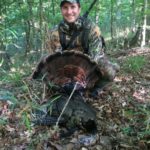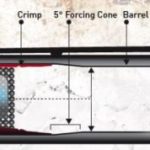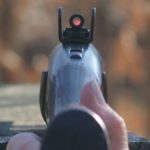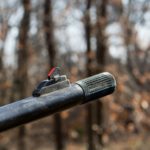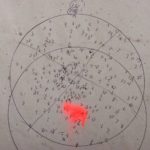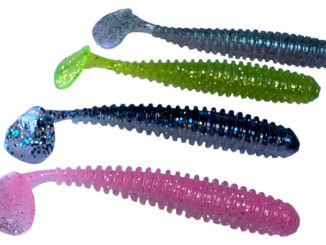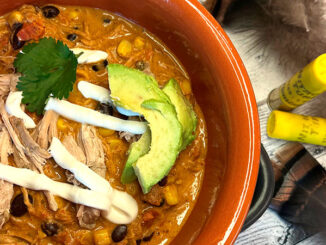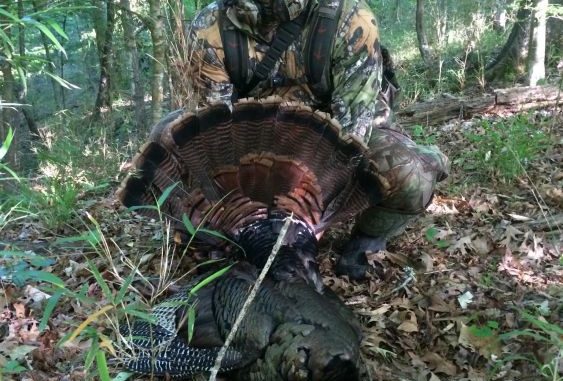
Your shotgun, choke, sights and ammo all play a big part in your success — or lack thereof — out in the woods. Try these tips to tweak your gobbler gun, and you’ll be talkin’ turkey this spring.
Editor’s note: This story was written in conjunction with Kenny Long.
We have a love/hate relationship with our turkey shotguns — if they knock over a big gobbler on an improbable shot, we love them and take the credit. But if the gobbler runs off after what should have been an easy kill, it’s always the gun’s fault.
Now is the time to increase the odds that you’ll love your shotgun this season by spending a little quality time with it before you take it for long walks in the turkey woods starting next month.
I was musing over these thoughts, and talking to a friend in the Ozarks, Kenny Long, who had some interesting observations on choosing the proper turkey gun — and then tuning it for hunting turkey.
His methods struck me as really practical for the average shooter/turkey hunter — so I asked to interview him and put some of his suggestions to paper. Hopefully this will help all you feather dusters, whether in the flatlands, the hill country or those traveling to the mountains, to collect birds this spring. I know his ideas definitely helped me design my next turkey gun.
The following are Long’s thoughts on the ideal combination of shotguns and turkey loads. Here’s what he’s settled on — and how you can build your own personal gobbler gun:
Pump it up
“I’ve never considered anything other than a pump,” he said. “The main reason is silence in loading on the stand. I always slip two shells in the magazine before I leave the house so I won’t get to the turkey woods without ammo. I slide a shell out of the magazine and slip it into the chamber when I sit down, 45 minutes before sunrise, sometimes within a hundred yards of a roosting gobbler.
“Other hunters tell me they had to let the bolt slam shut on a semi-auto to get it to function properly. After the slam of the bolt shatters the night silence, I fear every turkey I hunt within a mile would say nothing at gobble time — equating to ‘Thank you very much — bye.’ With a pump gun, you can close the shell into the chamber with a very slow stroke of the forearm. You can feel the shell seat in the chamber and the bolt close and lock. And it is much quieter.
“A cousin let a big gobbler escape because he checked the bolt on his semi-auto by pulling on it, and letting it back down easily. When the gobbler showed up, the bolt was not completely shut and the gun wouldn’t fire. That’s a real heartbreaker, considering how hard it is to even get close enough to a turkey to shoot it with a shotgun.
“On occasion, I have slipped into place in the dark and loaded a shell in the barrel from the two in the magazine (for safety, I carry with the chamber empty.) The gobbler wasn’t where I thought he would be when he started his morning calls, and I was way too close. Fortunately, he didn’t know I was there, and I managed to collect him. Had I used a semi-auto, and had to slam the bolt shut to insure it seated properly, I would have lost the bird.
“On one hunt that comes to mind, it was a fully moonlit predawn and I periodically bawled like a calf to attempt to fool the bird as I walked to my position. Being in a pasture, I figured the bird heard me walking in, but couldn’t tell the difference between me and the cows.
“I didn’t count on the cows. They stopped chewing their cuds, and with bemused expressions, watched this really strange-looking two-legged calf passing by.
“It was barely shooting light when the gobbler sailed out and landed about 15 yards from me. In a few seconds he figured me out, and took off running straight away through the fescue. I mowed down a wedge of fescue between him and me to bring him down. To prove you can assume nothing, the previous morning he had still been in a tree at 9:30 a.m. — about a hundred yards farther north of my position. This proves yet again how important complete silence is in assuming your position when hunting turkeys. You can never know exactly where the bird is, and you may need to slip into your site in complete darkness, settle in, and charge your gun — and the bird may be practically overhead — or a hundred yards away.
“On all three of my guns, the forcing cone has been relieved (that’s the area of the barrel just ahead of the chamber) to cut down on deformed shot that won’t fly true. A gunsmith lengthens the sloped cone-shaped area ahead of the shell — which compresses the shot chain into the barrel, a smaller diameter than the chamber, of course. The lengthened cone allows the shot chain more space to compress to the diameter of the barrel, reducing the number of deformed pellets that would fly outside the main pattern.”
Sight it in
“Everyone says you don’t aim a shotgun — you point it. But everyone doesn’t hunt turkeys — and you AIM at turkeys, specifically their heads and necks. So good sights are a welcome help on a gun where you will be aiming at something perhaps 40 yards away, the width of a small hand, and the length of a foot-ruler.
“I prefer ghost-ring sights…those large peep sights are easy to see through in dim light, and like all peep sights, you naturally center the front sight in the middle of them. The Mossberg Ghost Ring package includes an orange iridescent front sight. I find these really stand out in the early morning dimness.”
Choke choices
“The end of the barrel is the key to a tight pattern. My Browning Game Gun has an Indian Creek choke screwed into it (www.indiancreekss.com). I have a pattern I shot on my desk. It showed an actual count of 275 pellets in a 12-inch circle at 40 yards.
“Save high-dollar ammo for the final shots by using inexpensive birdshot at only 20 yards. You can draw several targets on one piece of target paper that way. Shoot by taking rest on your knee. Adjust your sights after each shot.” (Note: I had to put shims under one Ghost Ring back sight to get the gun to shoot high enough.)
Patterning your gun
“I now use the lid off a 5-gallon bucket as a template. That will give you roughly a one-foot circle — about the area of a gobbler’s head and neck. Draw this circle on a large piece of cardboard and cut it out, leaving a hole that is 12 inches in diameter.
Spray paint a dot about the size of your fist onto your pattern paper, which should be white or off-white and clean. If your pattern sheet is large enough, you can paint several dots, and pattern several times on the same sheet.
Sit down with your back to a tree, as you would hunting a turkey, and aim at the dot from 40 yards.
Use proper shooting technique:
1. Natural point of aim (Don’t muscle the gun one way or the other.) Relax, look away, then look back to see if you are still close to being on the target.
2. Breath control – Take three deep breaths and hold the third one. Let out half of it and shoot within 15 seconds. If you take too many deep breaths you may tremble.
3. Trigger squeeze – Have the tip of your finger on the trigger so you press the trigger straight back into the web of your hand, wrapped firmly around the pistol grip of the shotgun.
(Note: these same tips work with a scoped rifle, too.)
After you fire at the target, if the center of your pattern is not the center of the target, place your cutout template over the largest perforated area to redraw the target. This will tell you where the shotgun is throwing its heaviest concentration of shot in relation to your aiming point. You can count the number of pellets within the 12-inch circle to get an idea of which shell and shot patterns best with your gun and choke.
This is where your adjustable rear sight comes into play — you move the rear sight in the direction you want the center of the shot pattern to move. By adjusting the rear sight, you move the heaviest portion of the shot pattern to where your eye places the sights on the target.
Best ammo, choke combo
The shotgun will tell you. A friend in Birmingham says his shotgun patterns best with 2 ounces of No. 5 Hevi-Shot. All three of my shotguns like 2 ounces of No. 6 Hevi-Shot. Another friend told me he loves duplex ammo — a combination of shot sizes within one shell.
Whatever your gun likes best, try to use only that shell, of course. Two of my guns have Indian Creek chokes. My late father’s shotgun has a MADD Hevi-Shot tube. There are many choices on the market, and a competent gunsmith can advise you.
If you change ammo ….
Start all over again, even if you just change the amount of shot in the shell. I’ve seen it change the pattern and the point of impact.
The final act of desperation
If a gobbler gets too close to you, he has the advantage. At a normal distance, your target should be its head and neck — but this would be at 15 to 40 yards — and you will get a pattern.
If its at 10 feet, take a body shot. Aim about the hip joint and you won’t ruin the breast, the beard or the fan.
Or you can just sit there in the awful silence and blame the shotgun, the call, or your bad luck — after the gobbler gives its alarm putt, and makes a run for it — with its wing beats subsiding in the distance instead of thrashing and pounding the ground right in front of you.
